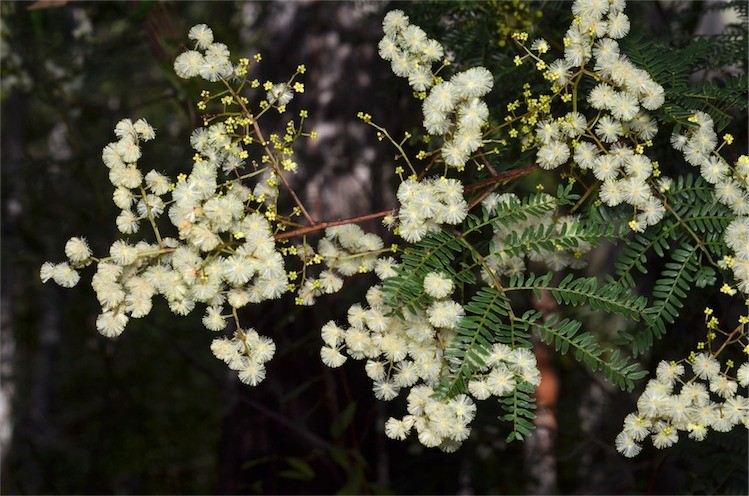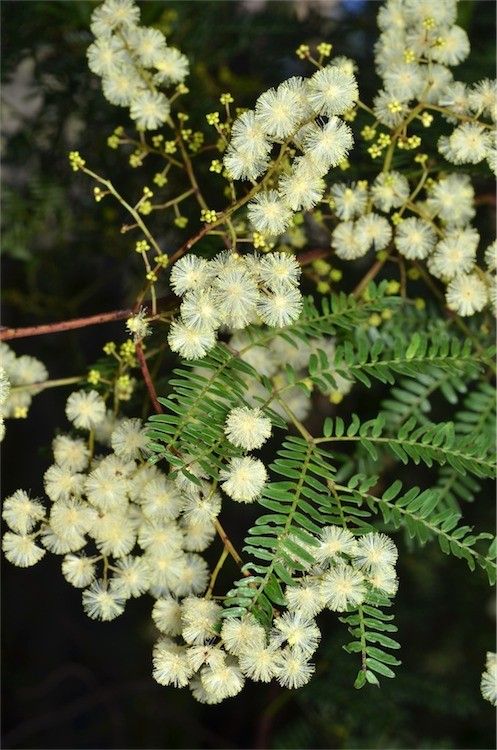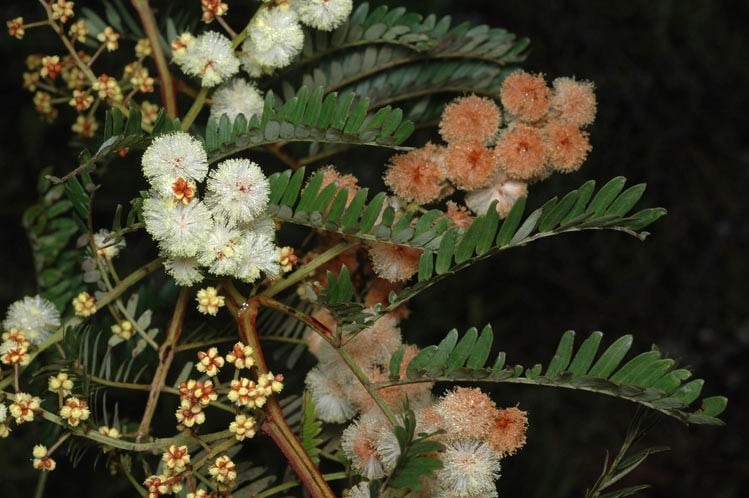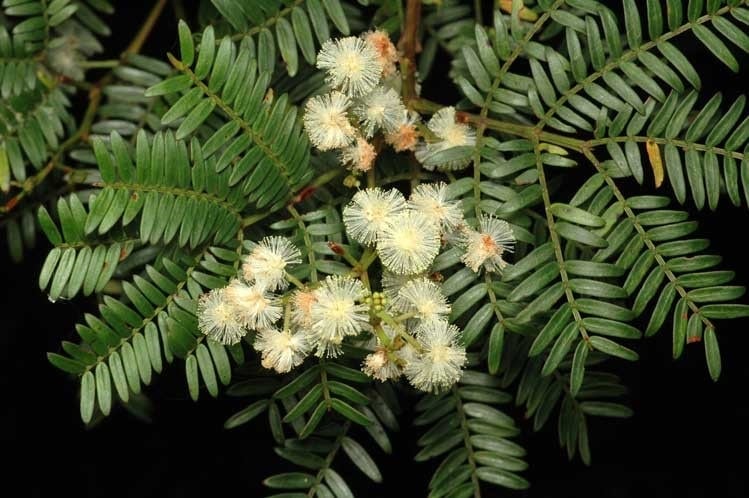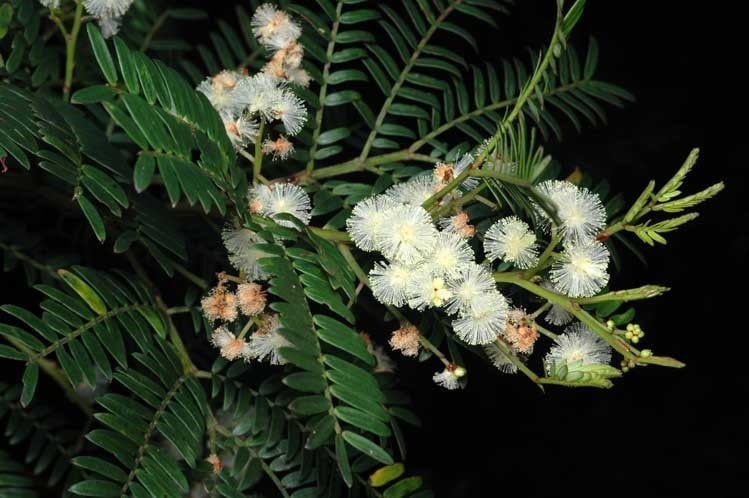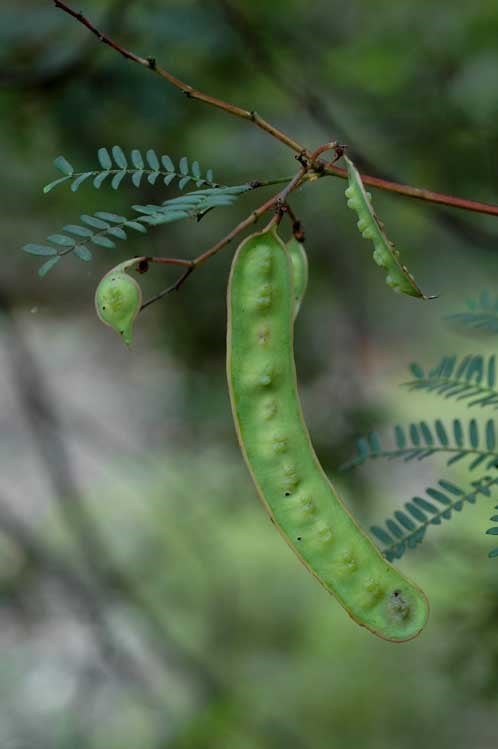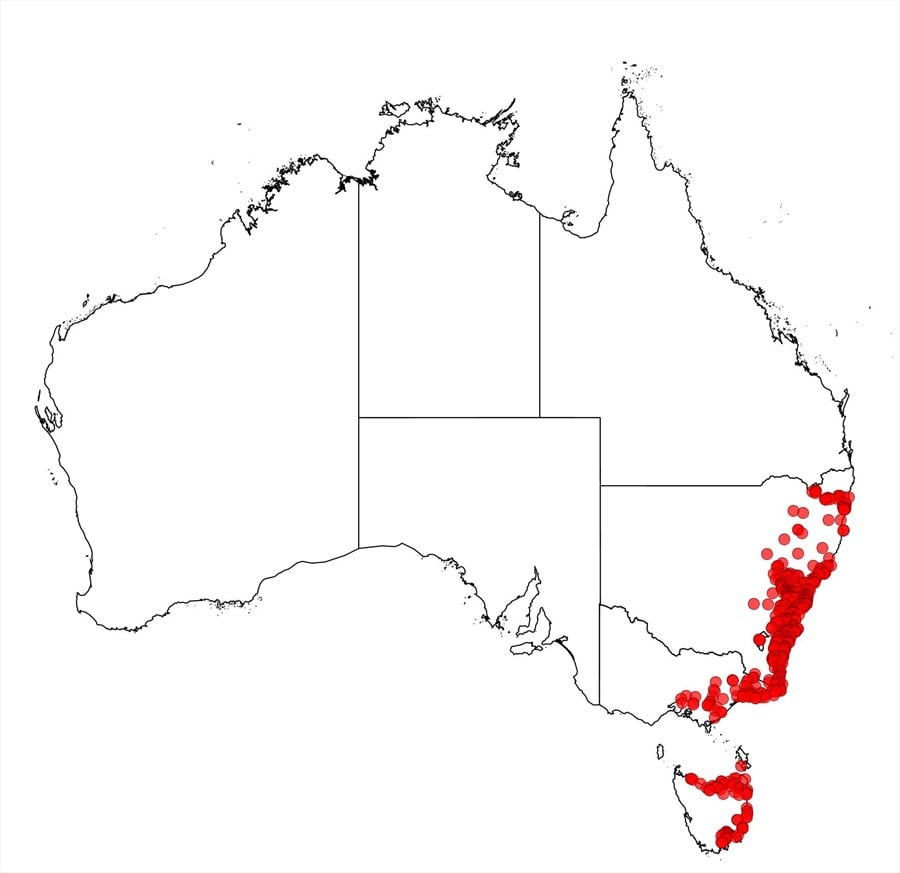Acacia terminalis (Salisb.) J.F.Macbr.
WATTLE
Acacias of Australia
Common Name
Sunshine Wattle
Family
Fabaceae
Distribution
Widely distributed in south-eastern Australia on the coast and adjacent tablelands, from northern N.S.W. to Tas. Grows in heath, woodland and forest, in a range of soil types and topography, often in sandy soils on sandstone.
Description
Variable slender or spreading shrub or occasionally small tree to 6 m high. Bark smooth, grey or brown. Branchlets angled, brown, reddish brown or blackish, glabrous to densely pubescent, with low to distinctly raised longitudinal ridges. Young foliage-tips reddish or greenish brown, resinous. Leaves: petiole 0.7–4.3 cm long, glabrous to densely pubescent, with a small or prominent gland just below to 1/2 way down from basal pair of pinnae; rachis 0.7–9.5 cm long, sometimes absent, glabrous to densely pubescent, eglandular or with a gland at base of terminal pair of pinnae, interjugary glands absent; pinnae 1–8 pairs, 1.3–9 cm long; pinnules prominently discolorous, dark green and shiny above, paler and dull below, 5–21 pairs, mostly not overlapping or touching, mostly oblong to narrowly oblong, elliptic to narrowly elliptic or narrowly ovate to lanceolate, 1.9–18 mm long, 0.9–5.7 mm wide, ±flat to slightly recurved, glabrous or ciliate, with midnerve prominent and apex mostly acute to acuminate. Inflorescences in axillary or terminal racemes or false-panicles. Heads 5–14-flowered, cream-coloured, pale yellow or golden yellow, rarely pink. Pods straight or curved, to 10 cm long, 12–19 mm wide, coriaceous, purplish, blackish or reddish brown, with minor transverse nerves, often darker and rough over seeds, glabrous; margins paler, prominent.
Phenology
Flowers Feb.–Oct.; fruits Oct.–Feb.
Habitat
Grows in heath, woodland and forest, in a range of soil types and topography, often in sandy soils on sandstone.
Notes
This highly variable species is currently under review by P.G.Kodela (NSW). Currently the following informal variants are recognized but intergrades occur between some of them (especially in the Sydney basin) and further research is needed to better characterize the taxa.
The typical variant was called Acacia terminalis subsp. terminalis [nom. inval.] by B.R.Maslin & P.G.Kodela in B.R.Maslin (co-ordinator), WATTLE Acacias of Australia (2001). It is characterized among other things by its pale yellow or cream-coloured heads containing 7-14 flowers, usually stout, densely pubescent peduncles and glabrous to densely pubescent branchlets. It occurs on the northern shore of Sydney Harbour S to Botany Bay.
The second variant is currently known under the phrase name, A. terminalis subsp. Long inflorescences (P.G.Kodela 307) and was called Acacia terminalis subsp. longiaxialis P.G.Kodela & M.D.Tindale (ms) [nom. inval.] by B.R.Maslin & P.G.Kodela in B.R.Maslin (co-ordinator), WATTLE Acacias of Australia (2001). It is characterized among other things by its pubescent branchlets and leaf axes, very long racemes (to 33 cm) and pale-coloured heads. It occurs from the Toronto area to the far north coast of N.S.W.
The third variant is currently known under the phrase name, A. terminalis subsp. Glabrous form (M.Hancock 94) and was called Acacia terminalis subsp. angustifolia M.D.Tindale & P.G.Kodela (ms) [nom. inval.] by B.R.Maslin & P.G.Kodela in B.R.Maslin (co-ordinator), WATTLE Acacias of Australia (2001). It is characterized among other things by its tall shrub to small tree habit, glabrous or sparsely hairy branchlets and leaves, and pale yellow to cream-coloured heads. It occurs from central N.S.W. through Vic. to Tas.
The fourth variant is currently known under the phrase name, A. terminalis subsp. Bright yellow flower (M.Tindale NSW248078) and was called Acacia terminalis subsp. aurea M.D.Tindale & P.G.Kodela (ms) [nom. inval.] by B.R.Maslin & P.G.Kodela in B.R.Maslin (co-ordinator), WATTLE Acacias of Australia (2001). It is characterized among other things by its normally yellow or golden heads, glabrous branchlets (which are often pruinose) and leaves and its preference for growing at high altitudes. It occurs in N.S.W. where it is especially common on the upper parts of the Blue Mountains.
FOA Reference
Data derived from Flora of Australia Volumes 11A (2001), 11B (2001) and 12 (1998), products of ABRS, ©Commonwealth of Australia
Author
P.G.Kodela, M.D.Tindale
Revised by P.G.Kodela & B.R.Maslin
This identification key and fact sheets are available as a mobile application:
URL: https://apps.lucidcentral.org/wattle/
© Copyright 2018. All rights reserved.



